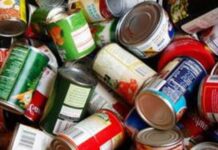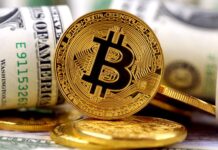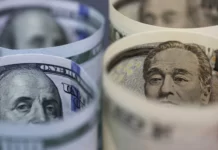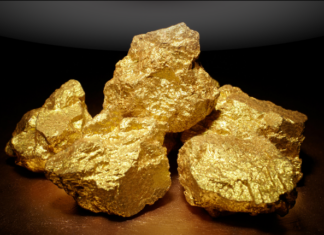Moneychangers, banks exploiting situation as regulator looks the other way
If you are in possession of any 100-dollar bills with old design and want to convert your hard-earned money to local currency, there is a strong likelihood you will lose Rs 3 for every dollar you trade in – courtesy local money changers and banks who are reluctant to accept these notes on the premise that they lack market acceptability.
It is U.S. government’s policy that all designs of American currency remain legal tender in the country regardless of their issue date. This includes all denominations of Federal Reserve notes from 1914 to the present, but things seem to change when it comes to trading the greenback in Pakistan.
According to market sources and people with direct knowledge of the development, money changers have been turning down customers willing to sell $100-bills with old designs or buying them at a price much lower than the market rate – consumers have reported a variation of Rs 2, Rs 3 or even Rs 4 compared to the market rate.
Since $100-bill is the most counterfeited currency internationally, the Federal Reserve, in 2010, decided to replace it with a new design, to make it harder for counterfeiters to copy and easier for the public and store cashiers to authenticate. The new (current design) $100-note has additional security features, such as a 3-D Security Ribbon and color-shifting Bell in the Inkwell. The $100-note also includes a portrait watermark of Benjamin Franklin that becomes visible on both sides of the note when exposed to light. The notes from the earlier design are being slowly disposed of in the international market so the Federal Reserve can replace it with the new design.
The phasing out of old $100-bills has resulted in lower demand for the old notes leading to an adverse situation for those in possession of it.
Currency exchanges are buying the old notes at a lower price in Pakistan and disposing it of in the international market at the market rates thus making extra money out of the situation. They are not only exploiting customers but also possibly violating a rule stated in State Bank of Pakistan (SBP)’s Exchange Companies Manual, dated June 30, 2016, which says spread between buying/selling rates of U.S. Dollar shall not exceed one per cent of their buying rate.
“Money changers are selling these old notes in Dubai and the US at the same market value as the new design notes,” an agent from a local exchange company confirmed this to Pakistan Today while requesting anonymity.
Moneychangers say that local banks are not accepting these old $100-notes and there is no point for currency exchanges to accept these notes. On the other hand, the banks blame customers with dollar accounts saying the latter demand new notes when drawing out cash thus banks can’t accept old notes.
A senior official at a private bank confirmed this on the condition of anonymity saying banks were reluctant to accept these old notes. “We have strict directions from the head office to accept only those foreign currency notes which are not soiled, torn, cut, mutilated or defective.”
An official from the central bank, who requested not to be quoted, endorsed the banks’ version saying the central bank’s directives were very clear on the matter: do not accept soiled, torn or defective notes.
When asked if the State Bank allows the moneychangers to charge a lower price for buying the old dollar, he said, “We let the market forces decide the exchange rate. As for these notes, if their market acceptability is low then the value would obviously fall. It is not a matter of allowing or disallowing. Money is a commodity in this market and we treat it as such.”
The official further said the US dollar is not Pakistan’s legal tender and therefore the banks are not obligated to accept these notes if the market conditions don’t allow them to. Responding to the question whether moneychangers are violating Exchange Companies Manual, he said it applies only in Pakistan.
However, Pakistan Today visited different money exchanges and found out that some of them were selling old dollar notes, popularly known as white dollar since the redesigning of the bill, at a slight discount than the new dollar note, which is known as the blue dollar.
While the blue dollar note is being sold for Rs 106.10, the white dollar note is being sold at Rs 106.00. If the amount being bought is greater, the discount can increase too. Among these, many of the exchange companies are also willing to buy white dollar note at Rs 102.00 while the blue dollar is bought for 105.80, signaling a difference of more than one per cent.
State Bank’s Foreign Exchange Manual’s (April 30, 2016) chapter on dealing in foreign currency notes and coins says, “When Authorised Dealers are unable to dispose of their holdings of foreign currency notes by sale to the public or other Authorised Dealers, they may dispatch such surpluses to their agents or correspondents abroad for crediting their value to their foreign currency accounts.”
This provision allows the exchange companies to have their surplus currency notes (old design US dollars in this case) credited to their foreign currency accounts at the market value i.e. the new dollar’s market value; which in turn allows them to withdraw new notes when required and also earn a hefty profit on it.
If an Authorised Dealer has the ability to export its surplus currency notes of the old design and get the market value equivalent to the new dollar note, then the act of buying the old dollar bill at a lower rate becomes baseless.
“It is a vicious circle that needs to stop. The banks, the money changers and the common man – all refusing to accept the old 100-dollar note,” said a person who had to trade in his bucks for a lower price.
























Bht alla yrr abbas
Thanks